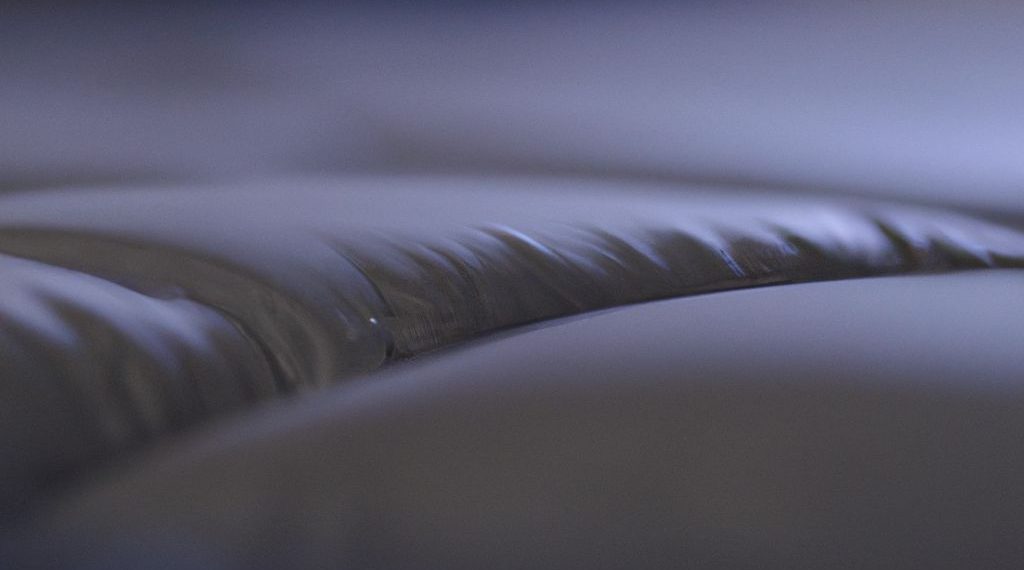Key Takeaways:
- Finding and fixing leaks in a queen size air mattress is important for maintaining its functionality and comfort.
- Preparing to find the leak involves removing bedding, inspecting the mattress, and properly inflating it.
- Methods for finding the leak include inspecting valves, using the dish soap method, visually inspecting the fully inflated mattress, submerging it in water, and using the garden hose method.
- Fixing the leak requires confirming the presence of a leak, cleaning and drying the mattress, choosing the appropriate patch material and adhesive, and applying and securing the patch effectively.
- To prevent future leaks, it is important to properly maintain the air mattress, ensure proper inflation, avoid sharp objects, and use bedding as an extra layer of protection.

Photo Credits: Www.Mattressreviewguru.Com by Christian Johnson
Finding and fixing leaks in a queen size air mattress is crucial for a good night’s sleep. In this section, we will explore the importance of locating and addressing these leaks promptly. By understanding the significance of this task, you’ll be equipped with the knowledge to preserve the comfort and durability of your mattress. Let’s dive into why finding and fixing leaks in a queen size air mattress matter and how it can improve your overall sleep experience.
Importance of finding and fixing leaks in a queen size air mattress
Leaking air mattresses can be a pain, especially queen-size ones. Fixing them quickly is key, as it affects how comfy they are. Not maintaining them right can lead to a completely flat mattress. So, finding and fixing leaks in a queen-size air mattress is a must.
Start by getting rid of all bedding and looking closely at the mattress. Inflating it helps find any potential leaks. Then you can begin to find the leak.
Check the valves and make sure they’re properly inserted. You can also try the dish soap method: Apply soapy water and look for bubbles. Or check for visible damage and punctures. Submerging the mattress in water or using a garden hose also reveals bubbles from damaged areas.
Once you’ve found the leak, mark the spot. Clean and dry the area before patching. Get the right patch material and adhesive for the best results. Secure the patch and you’re done!
To prevent future leaks, make sure to inflate the mattress and regularly check for damage. Keep sharp objects away. Use bedding for extra protection.
Finding and fixing leaks in a queen-size air mattress is essential. Follow the right steps and take preventive measures for a functional, durable mattress.
Preparing to Find the Leak
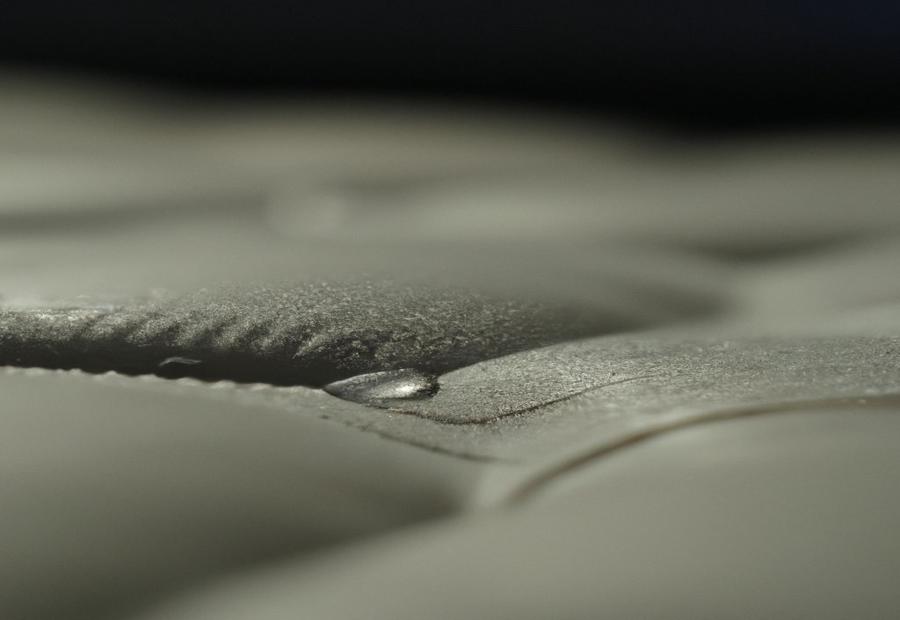
Photo Credits: Www.Mattressreviewguru.Com by Adam Jones
Before you start finding a leak in your Queen Size Air Mattress, it’s crucial to prepare properly. This section will guide you on two essential steps. First, we’ll cover the process of removing bedding and inspecting the mattress to identify potential leak sources. Then, we’ll explore the importance of properly inflating the air mattress for an accurate leak detection process. With these crucial preparations, you’ll be well-equipped to pinpoint and address any leaks in your mattress efficiently.
Removing bedding and inspecting the mattress
To make sure the process is effective, it’s essential to take off the bedding and inspect the mattress thoroughly. Assessing the mattress condition will help to spot any potential leaks and see how much damage there is. A focused approach for finding and fixing a leak in a queen size air mattress can be achieved with proper inspection.
A 5-Step Guide to Remove Bedding and Inspect the Mattress:
- Start by taking off all bedding, like sheets, blankets, and pillows, from the queen size air mattress.
- Examine the mattress surface for any visible signs of damage or wear. Be on the lookout for punctures, tears, or any other signs of a leak.
- Check the seams and edges – these are usually more susceptible to leakage due to regular use.
- Use hands to feel along the mattress surface, gently pressing to detect any hidden leaks that can’t be seen.
- Make note of any suspicious areas or potential problem spots that need further investigation.
Inspecting the mattress requires attention to detail. Make sure to look at both external and internal factors, such as the air chambers. This will result in a comprehensive assessment of possible causes for leakage in a queen size air mattress, while preserving its overall integrity.
Make sure to properly inflate the air mattress, or you’ll feel like sleeping on a deflated balloon with hopes and dreams.
Properly inflating the air mattress
Inspecting an air mattress prior to inflating is essential. To ensure your queen size air mattress is ready for use, consider the following 3 steps:
- Strip any bedding from the mattress. Look out for tears, punctures, or holes that may hinder the air-holding capacity.
- Inflate using a pump or an air compressor specifically designed for inflatable mattresses. Follow the manufacturer’s instructions for the recommended level of inflation.
- Test the firmness of the mattress by pressing down on different areas. Adjust the inflation rate if needed to reach your desired comfort level.
Methods for Finding the Leak
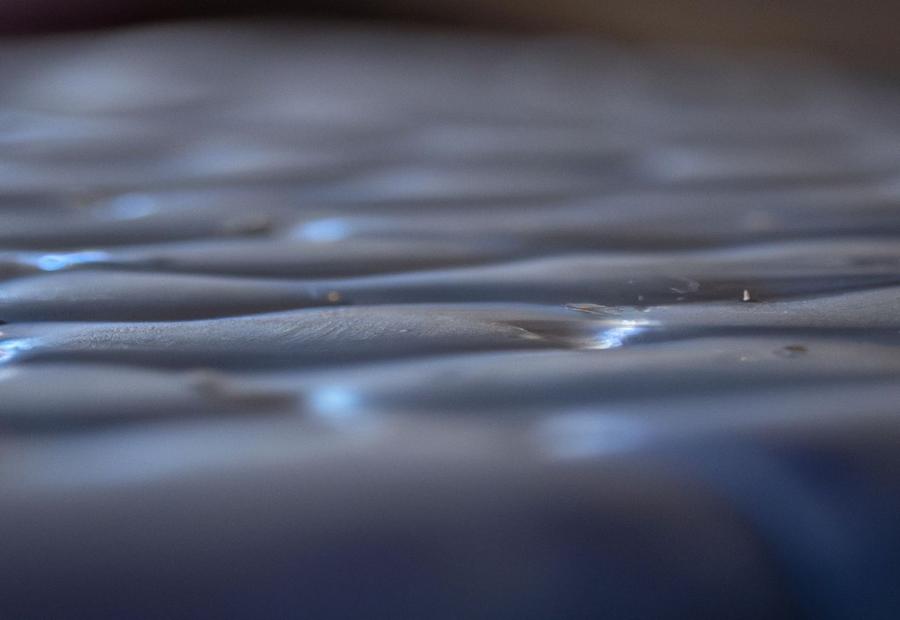
Photo Credits: Www.Mattressreviewguru.Com by Matthew Gonzalez
Finding a leak in a queen size air mattress can be frustrating, but fear not! In this section, we’ll explore effective methods for detecting and pinpointing those sneaky leaks. From inspecting the valves and using the dish soap method to visually inspecting the fully inflated mattress and even submerging it in water, we’ve got you covered. Get ready to regain your peaceful sleep by learning how to tackle this air mattress dilemma head-on.
Inspecting the valves and ensuring proper insertion
Examining air mattress valves and ensuring correct insertion are essential steps to find and fix queen size air mattress leaks. Check valves for damage or wear. Ensure valves are in their designated openings and mattress is properly inflated before leak detecting.
Remove bedding. Inspect valves inside and out. Check for cracks or tears. Insert valves securely. Poor insertion causes air leakage and inaccurate leak detection. Test inflation level by pressing down on mattress. Inflation needed for effective leak detection.
Inspecting valves needs manual dexterity and attention. Ensure proper insertion to prevent leaks and get long-lasting performance. For information on the weight of a queen air mattress, you can visit this website.
I learnt the importance of inspecting valves and inserting them correctly when I failed to do so. Tried leak detecting for hours without success. Realized one valve wasn’t in fully and was causing air to escape. Fixed it and located the leak. Dish soap method gives air mattresses a bubble bath to catch leaky culprit.
Using the dish soap method to check for leaks
To check for leaks using the dish soap method, follow these steps:
- Mix dish soap and water in a spray bottle in a ratio of 1:3.
- Fully inflate your air mattress and remove any covers. This gives you access to the whole surface.
- Spray the soapy solution all over the mattress, paying special attention to seams and valve connections. Look for bubbles as they indicate a leak.
The dish soap method is reliable and efficient. It helps you quickly locate leaks and then patch them up. It’s an important tool for maintaining the optimal functionality and durability of your queen size air mattress.
Visually inspecting the fully inflated mattress
Carefully inspect the mattress. Look for bulges, wrinkles, or stretched fabric. These may suggest leak points.
Examine seams and edges as well. Check for separation or fraying. This could mean air is escaping.
Finally, inspect valves and connectors. Look for cracks, tears, or misalignments. These could cause air leakage.
Be attentive when inspecting. Focus on detail to detect any potential sources of leakage.
Submerging the mattress in water
- Grab a large container or tub, big enough to immerse your air mattress.
- Carefully lower the inflated mattress into the tub.
- Look for any bubbles or streams escaping from its surface.
- Press on different areas to see if any air bubbles emerge.
- Note or mark the spots with leaks.
- After inspection, take the mattress out and dry it.
- Submerging the air mattress in water will detect even the smallest of leaks.
- This method lets you pinpoint the leak and mark it for repair.
- Be sure to allow it time to dry fully after taking it out of water to prevent moisture damage.
- If your air mattress is leaking, grab a garden hose and inspect those pesky holes!
The garden hose method for detecting leaks
Get ready: Inflate the air mattress and take off any bedding that may get in the way.
Next step: Attach a garden hose to a water source and spray it on the mattress. All areas must be covered – pay attention to seams, corners and valves.
Keep an eye out: As you spray, look out for bubbles or air escaping. Bubbles mean there is a leak in that spot.
The garden hose method for detecting leaks is easy and effective; it will check all areas of the air mattress. If bubbles come out, it means there is a leak. Be careful when spraying water – don’t use too much force. It may help to have someone else around to spot any leaks.
By following these steps, you can detect leaks in your mattress and do necessary repairs to keep it comfy and working well. Fixing a leak is like surgery – but with more squeaks and no saving lives!
Fixing the Leak
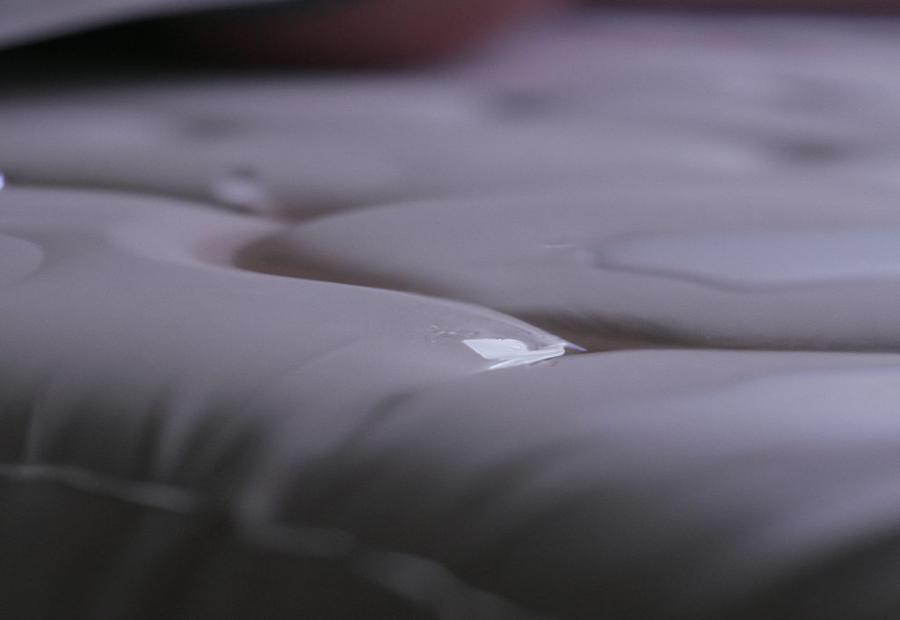
Photo Credits: Www.Mattressreviewguru.Com by Zachary Young
Fixing the leak in your queen size air mattress is crucial for a good night’s sleep. In this section, we’ll explore the step-by-step process of rectifying the issue, starting with identifying the presence of a leak and marking the damaged area. We’ll then move on to the vital steps of cleaning and drying the mattress before patching it up. Additionally, we’ll discuss the importance of choosing the right patch material and adhesive, as well as techniques for applying and securing the patch effectively. Sleep tight without worrying about a deflated mattress!
Confirming the presence of a leak and marking the damaged area
To confirm a leak in a queen size air mattress, follow these steps:
- Examine the surface and feel for any air escaping.
- Apply a solution of water and dish soap to the mattress and look for bubbles.
- Submerge the mattress in water or use the garden hose method to detect hidden leaks.
- Mark the damaged area with a marker or tape.
- Clean and dry the mattress before applying a patch.
- Be thorough when inspecting.
- Clean and dry the mattress for proper adhesion.
According to an article, confirming the presence of a leak and marking the damaged area is essential for successful repair.
Cleaning and drying the mattress before patching
To patch a queen size air mattress properly, it is essential to clean and dry it first. Here’s how:
- Take bedding or covers off the mattress. This will give access to the entire surface and stop dirt from getting onto the patch.
- Clean the mattress with a mild soap solution or gentle cleaner. Wipe off oils, stains, and dirt. Thoroughly rinse. Let the mattress dry completely before you patch.
- Place the mattress in an airy area. This will help it dry quickly and stop moisture being trapped beneath the patch.
Follow manufacturer’s instructions if given. Don’t rush the cleaning process – take your time.
We recently needed to patch our queen size air mattress after it got damaged outdoors. After identifying the leak using the dish soap method, we had to clean and dry it. We used a mild soap solution and gave it time to dry completely before applying a patch. After putting effort into this step, we were able to patch up the mattress and restore its functionality.
Choosing the appropriate patch material and adhesive
Fixing a leak in a queen size air mattress requires the right patch material and adhesive. To pick the correct one, there are several factors. Here is an overview:
| Consideration | Description |
|---|---|
| Material Compatibility | Make sure the patch material and adhesive are compatible with the air mattress material. Different mattresses may need different repair materials. |
| Patch Size | Select a patch material large enough to cover the area. It should prevent leakage. |
| Adhesive Strength | Choose an adhesive with strong bond capabilities. It should stay in place under pressure and movement. |
| Drying Time | Consider the drying time of the adhesive. Pick one that dries fast so you can use the mattress soon. |
Also, follow manufacturer instructions. They may suggest specific products for optimal results. By doing this, you can fix the leak in your queen-sized air mattress effectively.
Applying the patch and securing it effectively
- Identify and mark the damaged area of your queen size air mattress.
- Clean and dry it well.
- Choose a patch material and adhesive that’s compatible with your mattress.
- Make sure it has excellent adhesive properties.
- Follow the instructions for application.
- Put an even layer of adhesive slightly beyond the edges of the marked area.
- Place the patch onto the damaged area firmly but gently.
- Smooth out any wrinkles or air bubbles.
- Apply pressure evenly across the entire surface.
- Allow the adhesive to cure before using or inflating your air mattress.
- For multiple leaks or large tears, use extra patches for reinforcement.
- To prevent future deflating disasters, follow these leak-proof tips!
Preventing Future Leaks
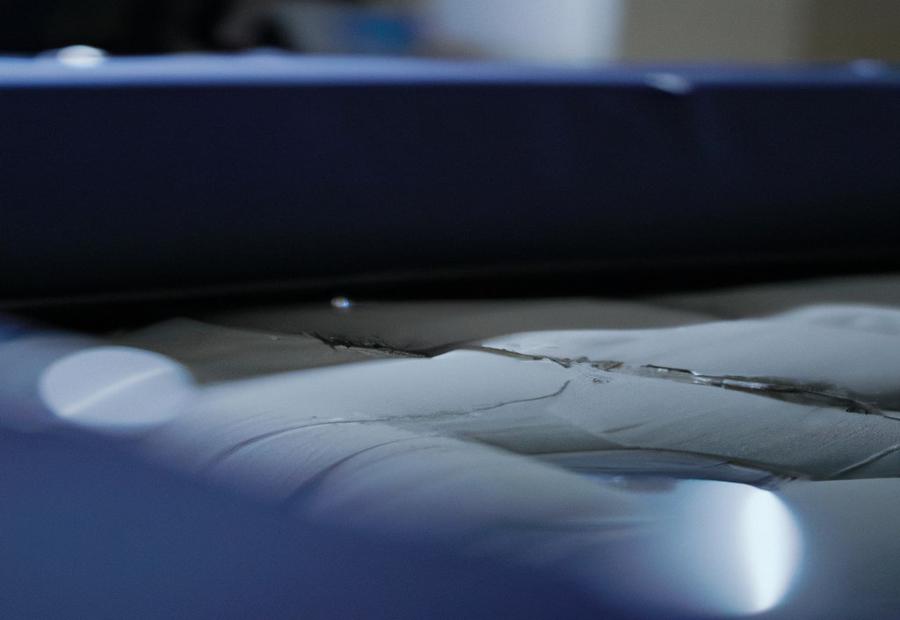
Photo Credits: Www.Mattressreviewguru.Com by Elijah Williams
To prevent future leaks in your queen-size air mattress, it’s crucial to follow proper maintenance techniques and take precautionary measures. In this section, we will explore helpful tips for maintaining your air mattress, ensuring proper inflation, and protecting it from sharp objects. Additionally, we will discuss how utilizing bedding can serve as an extra layer of protection, ultimately prolonging the life of your air mattress. So, let’s dive in and make sure your air mattress remains leak-free for a long time!
Tips for maintaining the air mattress
Maintaining an air mattress is key to make it last and ensure a comfortable sleep. To keep your queen size air mattress in check, consider the following tips:
- Scan the area for objects that can puncture the mattress.
- Inflate the mattress according to manufacturer’s guidelines.
- Store the air mattress in a cool and dry place when not in use.
- Cover or protect it with a Full Size Air Mattress cover to prevent tears or punctures.
- Clean and inspect it regularly using a mild detergent or cleaner.
Also, make sure your mattress is used correctly. With these measures, you can sleep comfortably while preserving its life!
Proper inflation and avoiding sharp objects
Protect your queen size air mattress with these five steps:
- Inspect the area for sharp objects, such as rocks, twigs, or furniture legs.
- Inflate with the right pump, following manufacturer’s instructions. Avoid overinflating.
- Keep sharp objects away from the mattress. No jewelry, keys, or pets nearby.
- Cover the air mattress with a protective cover or bedding layer.
- Store it safely – not too tightly folded or compressed.
Regularly inspect your air mattress for signs of wear and tear. Address them promptly to extend its lifespan and prevent future leaks.
These steps will help protect your queen size air mattress and ensure a comfortable sleep experience. Get ready to jump in your new bounce castle!
Using bedding as an extra layer of protection
Using bedding as an extra safeguard for a queen size air mattress is an effective way to avoid leaks. It creates a barrier between the mattress surface and potential damaging objects. This can help reduce the risk of holes and prolong the life of the mattress.
- 1. Bedding lessens contact between the air mattress and sharp objects.
- 2. It also distributes weight evenly, preventing pressure points.
- 3. Also, a fitted sheet covers the air mattress, creating a smooth surface that lowers friction.
- 4. Bedding also absorbs liquids, stopping moisture from getting into crevices and damaging the mattress.
- 5. Clean and check both the bedding and mattress for any wear or damage. Fixing any problems helps keep them in great condition.
Heavy-duty bedding materials such as mattress pads or protector covers can provide extra resilience against leaks.
Overall, bedding is a great part of caring for a queen size air mattress. It reduces the chance of leaks and keeps it in good shape for longer.
World War II soldiers used straw and sacks as mattresses to sleep on hard surfaces. This gave the idea for using bedding as a protective layer. Now, with improved materials and technology, we have specialized bedding to make mattresses, including air mattresses, more durable and secure.
Conclusion
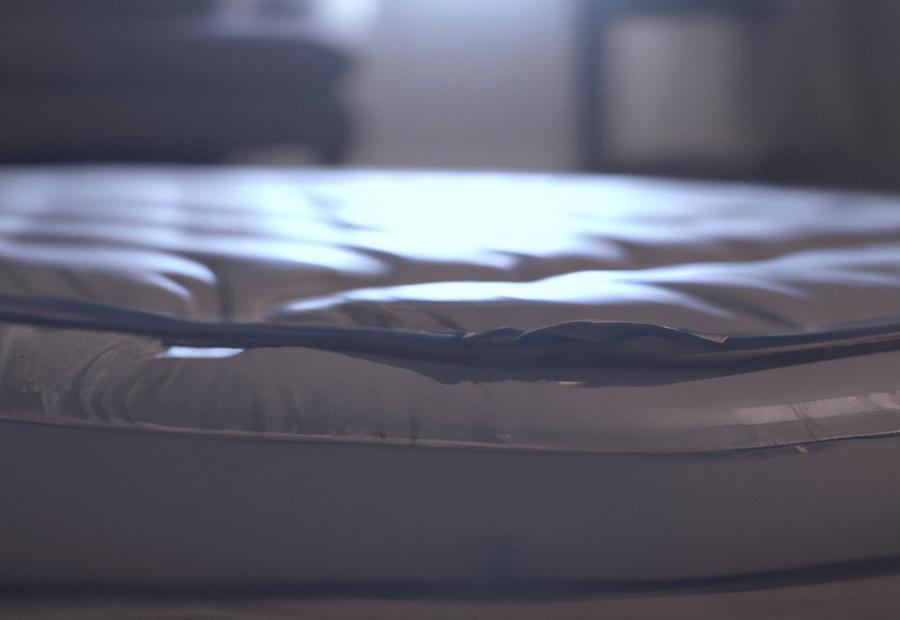
Photo Credits: Www.Mattressreviewguru.Com by Alexander Flores
Finally, there are steps you can take to find and fix any leaks in your queen size air mattress. Follow the steps below:
- Inflate the mattress and listen for hissing sounds.
- Use a soapy water solution to pinpoint the leak’s location.
- Mark the location of the leak with a marker or tape.
- Deflate the mattress and make sure it’s dry.
- Patch the leak using a patching kit.
By following these techniques, you can enjoy a comfortable night’s rest on your queen size air mattress once again!
Some Facts About How to Find a Leak in a Queen Size Air Mattress:
- ✅ Overinflation can cause leaks in a queen size air mattress. (Source: Team Research)
- ✅ The dish soap method is an effective way to find leaks in a queen size air mattress. (Source: Team Research)
- ✅ Visually inspecting the fully inflated mattress can help identify leaks in a queen size air mattress. (Source: Team Research)
- ✅ Submerging the mattress in water can be a method to find leaks, but caution must be taken to avoid damaging the material or seams. (Source: Team Research)
- ✅ Using the garden hose method can help locate leaks by looking for bubbles in a queen size air mattress. (Source: Team Research)
FAQs about How To Find A Leak In A Queen Size Air Mattress
How do I find a leak in a queen-size air mattress?
To find a leak in a queen-size air mattress, start by removing all bedding and inspecting the valves. Fill the mattress with air, making sure not to overinflate it, and check the valve plug to ensure it is properly inserted. You can also use the dish soap method by mixing liquid dish soap with warm water in a spray bottle and spraying it on the mattress. Bubbles will form where there is a leak, allowing you to mark and repair it.
What can I use to patch a small hole in an air mattress?
To patch a small hole in an air mattress, you can use an air mattress repair kit, a bike tire patch kit, or even a flexible item like a plastic shower curtain. Clean the area around the leak, let it dry completely, and apply the patch, making sure it covers the entire leak and a half-inch radius around it. Use a strong adhesive if necessary and apply pressure to the patch to ensure it dries flat.
Can I find a leak in an air mattress by visual inspection?
Yes, you can find a leak in an air mattress by visually inspecting it. Fully inflate the mattress and examine it in a well-lit room. Look for tiny pinholes or tears, especially along the seams. You can also run your hand along the surface of the mattress to feel for escaping air or apply pressure with your hand and listen for hissing sounds, which indicate a leak.
Is it possible to find a leak in an air mattress by submerging it in water?
Submerging an air mattress in water is a method to find a leak, but it is important to check the manufacturer’s recommendations before doing so. Partially inflate the mattress and submerge the valve stem in water, applying pressure to force out any air. Look for bubbles around the valve and other areas of the mattress. Mark the leak and dry the mattress before storing or patching it.
How can I prevent leaks in a queen-size air mattress?
To prevent leaks in a queen-size air mattress, avoid overinflating it and set it up in a safe place free from obstacles or sharp objects. Using bedding with the air mattress can also provide extra protection. By taking these precautions, you can minimize the risk of small holes that cause the mattress to slowly deflate.
Can duct tape be used to repair a hole in an air mattress?
Duct tape can be used as a temporary fix for a hole in an air mattress, but it is not a long-term solution. It may provide a quick patch, but it is not as durable as other repair methods. It is recommended to use an air mattress repair kit, a bike tire patch kit, or a flexible material like a plastic shower curtain to properly patch and fix the hole.

